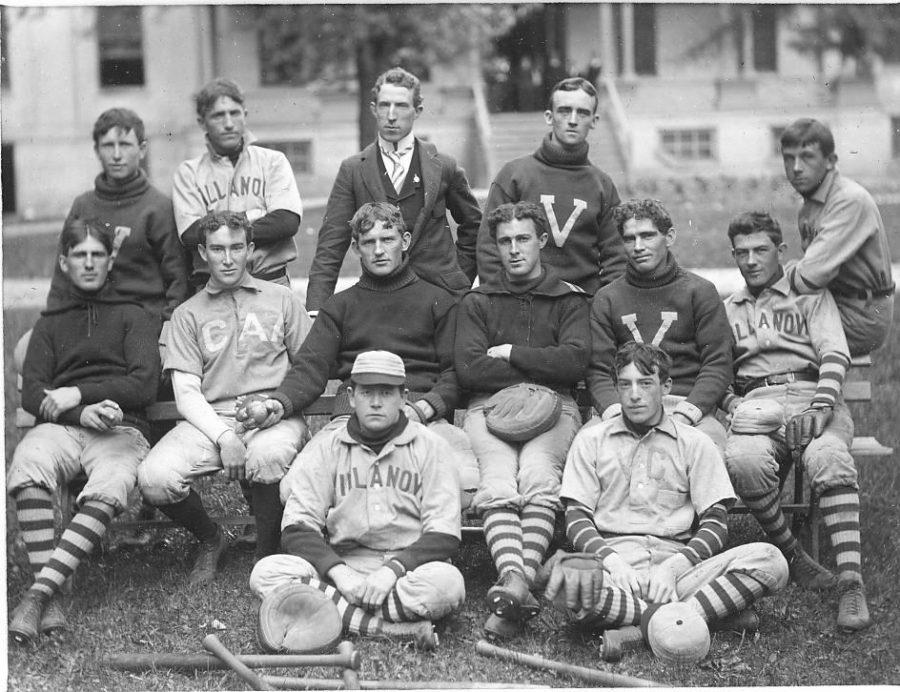The History of Villanova
July 23, 2017
Any Wildcat can tell you that Villanova University was established in 1842. It is as fixed in our minds as a certain trio of Latin fundamentals. However, those who truly bleed blue and white know that while a crew of OG Augustinians purchased the original 200 acres of land that became Villanova University in 1842, it wasn’t until 1843 that classes officially started. That fall, the sun shone just a little brighter on a small plot of land outside of Philadelphia, and though the students may not have known it at the time, they were in the beginnings of something truly great.
Truly great things are hardly ever brought up easily though, and almost as soon as Villanova opened its doors they were closed, and opened, and closed again. Turmoil sprung up around Villanova College (as it was not yet a university) in the form of anti-Catholic riots, re-allocations of resources, financial panics and the Civil War, during which the school was used as a hospital. It was not until General Lee’s surrender in 1865 that classes started up again and this time, for good.
In celebration of Villanova’s successful navigation of the preceding turbulence, several projects and expansions were commissioned. One such project was a Victorian Gothic church, dedicated to St. Thomas of Villanova, which began construction in 1883. Ten years later, in 1893, Villanova celebrated it’s “Golden Jubilee” fiftieth anniversary. Enrollment boasted a whopping 90 students.
To keep up with demand, former President John Fedigan, O.S.A raised $275,000 for the construction of a new college building and Augustinian Monastery. The building was originally named College Hall, and is still (barely) standing today as our much beloved Tolentine Hall. As most visionaries are ridiculed for their ideas, this construction project was considered too big of a task and too unnecessary considering the number of students actually enrolled at the time. The project was nicknamed “Fedigan’s Folly,” though some might say Fedigan got the last laugh, as, soon after, enrollment exploded to unprecedented figures.
In 1905, 213 students were registered for classes, more than twice the number of a decade before. In 1916, The Villanovan, Villanova’s student run newspaper, began its long history of printing only the most pressing and interesting stories for their classmates’ consideration.
The misfortunes of College (Tolentine) Hall that began with its introduction to the campus were amplified in 1928 when a fire spread throughout its construction. The flames caused severe damage, but not enough damage to constitute a complete renovation, as it was rebuilt in 1929 within its original exterior walls. The tragedy served as an unwelcome omen to the tragedies that were to come with the Great Depression. Many building projects were curtailed and enrollment fell to almost half of its peak at 1,100.
World War II also brought with it many fears for the future of the school, as compulsory military service risked diminishing the college’s attendance. However, the introduction of the Navy V-12 program in 1943, which trained recruits on campus, allowed Villanova to maintain its numbers. The V-12 program eventually became our campus’s Navy ROTC. With the help of the GI Bill giving free tuition to returning veterans, the end of the war in 1946 brought an enrollment boom to nearly twice its pre-WWII numbers.
In a move long overdue, Villanova opened up a full-time undergraduate program to women for the first time with the introduction of its Nursing School. Additionally, Villanova officially became a university in 1953, following a special act of the Pennsylvania State Legislature.
At the height of the Civil Rights Movement in 1965, Reverend Dr. Martin Luther King Jr. spoke at Villanova University. In that same year, Jim Croce, the singer-songwriter who gifted the world with such hits as “Big Bad Leroy Brown” and “Operator” graduated. Croce was a member of the Villanova Singers and Spires, as well as a DJ on WXVU. Three years later in 1968, Villanova made one of its soundest additions to campus in the admission of women to all of its schools. Though only admitted universally less than 50 years ago, co-ed Wildcats have since made exceptional contributions to the University.
In 2006, Villanova students welcomed Rev. Peter Donohue, O.S.A, Ph.D as the 32nd president. Since his inauguration, Donohue has commissioned the development of a Campus Master Plan which included designs for future constructions. Donohue was also the architect behind the annual Day of Service held every September.
In 1985, Villanova’s men’s basketball team, led by Rollie Massimino, beat Georgetown University for the NCAA championship in one of the biggest upsets in college sports history. Furthering the longstanding Villanova tradition of athletic excellence, Jay Wright was named head coach of the men’s team in 2001. Fifteen years later, on April 4, 2016, Wright’s leadership led the Wildcats to NCAA Tournament victory again. Houston’s NRG Stadium shook as, in the last 4.7 seconds of the Championship match up with the North Carolina Tar Heels, super star senior Ryan Arcidiacono passed the ball to junior forward Kris Jenkins, who sank the final three-pointer, taking the game and the national championship 77-74.
Though, in my opinion, our campus doesn’t look a day past one hundred, Villanova actually celebrated its demisemiseptcentennial (175 years to the layperson) last year. Every Wildcat may hold their head up in pride knowing all that this institution has done in that time, but with that also carry a responsibility to honor the tradition of excellence. We might all have our own dreams for the future of Villanova, like the renovation of a certain building that maybe should have been demolished in 1929, but ultimately, its fate lies in the hands of you, me and Jay’s starting lineup.


